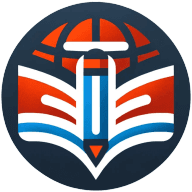7 Ways Edtech Enhances Student Collaboration Compared to Traditional Methods
Educational technology is revolutionizing the way students collaborate, offering innovative solutions that surpass traditional methods. This article explores seven key areas where EdTech is enhancing student teamwork, from virtual studios to AI-powered team matching. Drawing on insights from experts in the field, it reveals how these digital tools are breaking down geographical barriers and creating more engaging, efficient collaborative learning experiences.
- Virtual Studios Foster Global Student Collaboration
- Google Docs Transforms Home Education Projects
- Virtual Whiteboards Break Geographical Barriers
- AI Matches Students for Optimal Team Composition
- Gamified Platforms Incentivize Collaborative Learning
- Cloud Tools Streamline Student Project Management
- Video Breakout Rooms Encourage Small Group Discussions
Virtual Studios Foster Global Student Collaboration
At Legacy, we don't have in-person classrooms, so we have to intentionally design anything around collaboration. From the outset, we wanted students to feel like they were collaborating with, and contributing to, something meaningful even if they were at different corners of the world. That is how our virtual studio concept originated; a digital environment for brainstorming, co-designing, and feedback amongst students in real-time or asynchronously.
One project that exemplified the power of this approach was Future Cities. Students from different parts of the world collaborated to design sustainable urban solutions. A student in Tokyo would upload a city layout just before going to bed, while a teammate on the east coast of London would wake up to add notes to and modify this design overnight. Collaboration continued in a largely uninterrupted flow, and every stakeholder, regardless of their time zone, had an important perspective to offer.
What stood out to me was how leadership and creativity in the studio emerged so organically. Students who spoke little during video meetings became some of the most enriching participants in the threaded conversations that occurred after the live meeting, and via written commentary on the design artifacts, where they had opportunities to make meaning of their thoughts in writing. Teachers facilitated conversations mainly from the edges and only engaged to coach or inspire - not to control.
The biggest lesson was that EdTech isn't just about connection; it's about inclusion. Our digital tools gave every student an equal voice, space to think, and time to create. In many ways, they collaborate more deeply than most students ever could in a physical classroom.

Google Docs Transforms Home Education Projects
In our home education setup, Google Docs became the unexpected hero of group projects. What started as a simple tool for sharing writing turned into a space where kids could brainstorm, edit, and comment in real time. They'd open a shared document, and suddenly everyone was in there at once; one typing a sentence, another adding an image, another quietly fixing typos. It felt more like a conversation than an assignment. For kids who might not always speak up in person, the chat and comment features gave them a comfortable way to contribute ideas without interrupting or competing for space.
Compared to traditional group work around a kitchen table, this digital approach gave them more independence and accountability. There was a clear record of who added what, which helped keep things fair and transparent. More importantly, it showed them that collaboration doesn't have to mean sitting in the same room at the same time. They learned to build something together, piece by piece, from wherever they were — which, if you ask me, is a pretty useful life skill in a world where most teamwork happens through screens anyway.

Virtual Whiteboards Break Geographical Barriers
Virtual whiteboards have revolutionized the way students collaborate on a global scale. These digital platforms allow learners from different locations to work together in real-time, sharing ideas visually as if they were in the same room. Students can draw, write, and manipulate objects on a shared screen, fostering creativity and group problem-solving.
This technology breaks down geographical barriers, enabling diverse perspectives to come together in a single workspace. The instant feedback and ability to save progress make virtual whiteboards a powerful tool for ongoing projects. To enhance collaboration in your classroom, consider incorporating virtual whiteboards into your next group assignment.
AI Matches Students for Optimal Team Composition
AI-powered tools are changing the landscape of student collaboration by offering personalized peer-matching for projects. These intelligent systems analyze students' strengths, weaknesses, and learning styles to create optimal team compositions. By pairing complementary skills and personalities, AI ensures more balanced and productive group work.
This approach not only enhances the quality of collaborative efforts but also exposes students to diverse perspectives they might not have encountered otherwise. The personalized nature of these matches can lead to more engaging and rewarding project experiences. Educators should explore AI-powered peer-matching tools to foster more effective teamwork in their classrooms.
Gamified Platforms Incentivize Collaborative Learning
Gamified platforms are transforming student collaboration by introducing digital rewards that incentivize teamwork. These systems tap into students' natural desire for achievement and recognition, making group projects more engaging and fun. By earning points, badges, or virtual currency for collaborative efforts, students are motivated to contribute actively and support their peers.
This approach not only enhances participation but also helps develop important soft skills like communication and leadership. The competitive yet cooperative nature of these platforms can significantly boost student engagement and productivity. Teachers should consider implementing gamified collaboration tools to spark enthusiasm for group work among their students.
Cloud Tools Streamline Student Project Management
Cloud-based project management tools have significantly improved the efficiency of task delegation in student collaborations. These platforms provide a centralized space where team members can assign roles, set deadlines, and track progress in real-time. Students can easily share documents, communicate through integrated chat features, and update their status, ensuring everyone stays on the same page.
This level of organization reduces misunderstandings and helps teams manage their time more effectively. The accessibility of cloud platforms means students can contribute to projects from anywhere, at any time, promoting flexibility in group work. Educators should introduce cloud-based project management tools to help students develop crucial organizational and time management skills.
Video Breakout Rooms Encourage Small Group Discussions
Video conferencing breakout rooms have emerged as a powerful tool for encouraging small-group discussions in online learning environments. This feature allows instructors to divide large classes into smaller, more intimate groups where students can engage in focused conversations or collaborative tasks. Breakout rooms create a sense of closeness and encourage participation from students who might be hesitant to speak up in larger settings.
They also provide opportunities for peer-to-peer learning and the exchange of diverse viewpoints. The ability to easily reconvene as a full class allows for seamless transitions between group work and whole-class discussions. Teachers should experiment with breakout rooms to create more interactive and engaging online learning experiences.

